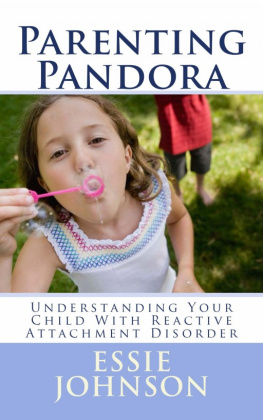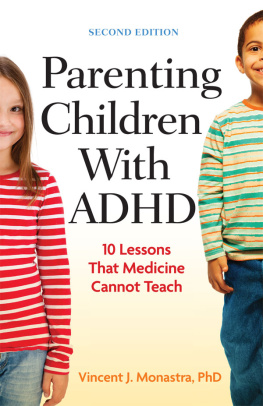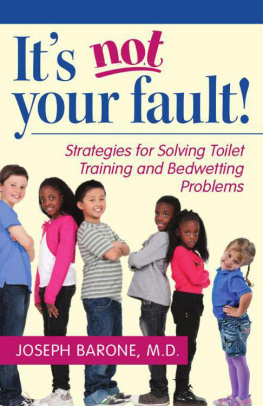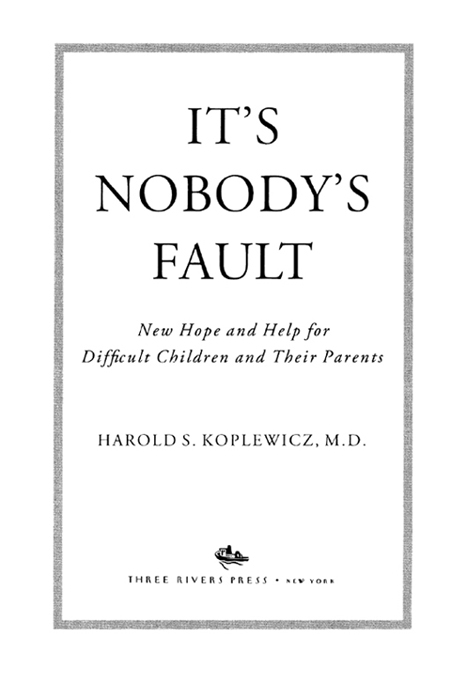Introduction to the
Paperback Edition
T HE DAY Its Nobodys Fault: New Hope and Help for Difficult Children and Their Parents was published, I started a book tour that took me across our nation. I was able to meet and speak to thousands of parents of difficult children. I listened to their stories of struggling to find the right help for their children in distress, of the ignorance of teachers and even some health professionals. On almost every television show or radio program in which I participated, the interviewer would share a vignette about his or her own troubled child and that childs success with medication. Unfortunately, the interviewers almost always shared these stories off the aira clear sign that the stigma of mental disorders in children and adolescents is alive and well in the United States. Millions of children suffer unnecessarily in classrooms, on playgrounds, and at home. Their parents continue to be unfairly blamed for their problems. I heard a recent report of a six-year-old boy who broke into a house, stole a tricycle, and brutally beat an infant. The media immediately blamed his mothers marital status, the familys socioeconomic class, and the neighborhood as the cause of the boys aberrant behavior. The fact that he was probably suffering from a serious psychiatric illness was totally overlooked.
Even as more scientific data comes in about the safety and efficacy of medication in the treatment of mental disorders, the media remain resistant to reporting its positive effects. While we are becoming more accepting of depressed adults decision to take antidepressant medication, we largely fail to do so when a depressed adolescents mental well-being is at stake. I see this media biaswhich naturally influences how parents consider the issueeven in the subtle use of language in coverage. Articles are more likely to refer to psychiatric medications as drugs, while antibiotics and even cancer chemotherapy are referred to as medicines.
The bias is still there, but the good news is that Americans are beginning to pay more attention to this issue. This year, Congress passed a bill giving parity or equality to mental illness. In other words, they are mandating that health insurers cover physical and mental illnesses equally. I applaud this act, because more and more research indicates that the no-fault brain disorders that I discuss in this book are as real as physical illnesses. A gene for Attention Deficit Hyperactivity Disorder has been identified. Research is being done to pinpoint the genes for depression, Tourettes syndrome, and obsessive-compulsive disorder. Our understanding of how the brain works is expanding almost daily. Molecular neurobiology is helping researchers develop new models to understand how chemicals carry messages in the brain and affect our emotions and behavior. Pharmaceutical companies have finally recognized the unmet need of children and teenagers with depression and anxiety disorders. Today research is being conducted and data collected to obtain approval for new medicines that will help these kids and eliminate their needless suffering.
Years ago, I took my oldest son, Joshua, on a business trip with me. He was seven and spent the day in an excellent child care program run by the hotel. I spent the day attending conferences. In the late afternoon, we had the opportunity to walk on the beach together and talk. Josh was very happy about being away from school and spending time with me. He held my hand and said, Can you imagine if we could do this every day? Somewhat alarmed, I replied, You mean stop going to school? He said, No, just hanging out and being in Florida. I said, You mean retire like Grandma and Grandpa? He looked at me and said, Dad, dont you know how to imagine? I never imagined when I entered child and adolescent psychiatry training that we would identify the genes and develop medicines that can change the way the brain worksand by doing so, save the lives of millions of children. We can be more hopeful than ever that new help will come every year to aid difficult children and their parents.
The publication of my book has given me a wonderful opportunity to work with different patient advocacy groups, members of Congress, and many in the mental health profession. If we can all continue to collaborate with and educate parents and teachers, well be able to identify children with no-fault brain disorders sooner and get them the help they need to bring out their full potential.

There are dozens of stories in this book about people I have encountered during my many years of practicing psychiatry. I talk about many children and adolescents Ive treated and parents I have counseled. On occasion I describe youngsters who have been cared for by my colleagues. The facts as I relate them here are accurate, but some of the details have been changed in an effort to keep the identities of all concerned private and confidential.
Acknowledgments
T HE FIRST PERSON I want to thank is Kathleen Moloney, whose skills as an interviewer and writer helped make this book possible.
My thanks go also to my agent, Wendy Lipkind. I have thought about writing a book for years; Wendy persuaded me that theres no time like the present. Fortunately my editor, Betsy Rapoport, had the same idea. Her enthusiasm and her words of encouragement have been much appreciated.
My colleagues in the Division of Child and Adolescent Psychiatry at Schneider Childrens Hospital were exceptional in their generosity and their understanding during all phases of this project. Many of them shared their wisdom and their experiences during the information-gathering period and offered valuable suggestions and honest appraisals as the book progressed. I am especially grateful to Joe Blader, Ph.D., Robert H. Dicker, M.D., Carmel Foley, M.D., David J. Ganeles, M.D., Stanley M. Hertz, M.D., Emily Klass, Ph.D., Michael H. Kronig, M.D., Marc W. Reitman, M.D., Mary V. Solanto, Ph.D., and Neil M. Smoke, D.O. I am thankful also to Howard Abikoff, Ph.D., Carmen Alonso, M.D., Keith Ditkowsky, M.D., Anita Gurian, Ph.D., Glenn S. Hirsch, M.D., Vivian Kafantaris, M.D., and Richard Morrissey, Ph.D., for sharing their experiences. Rona Novick, Ph.D., and Richard Gallagher, Ph.D., were especially helpful in making the principles of behavioral therapy understandable.
Other colleagues made significant contributions as well. Michael Maloney, M.D., Katherine Halmi, M.D., and David Herzog, M.D., shared their considerable expertise on eating disorders. Steven Suomi, Ph.D., chief of the Laboratory of Comparative Ethology at the National Institutes of Health, let me observe firsthand the work he is doing on animal behavior and temperament and was a gracious host. Bennett Leventhal, M.D., was enormously generous with his knowledge of brain chemistry, and he, too, made suggestions about the work in progress.
Many friends and family members were supportive and understanding during this project, especially Dominick Abel, Virginia Anthony, Ken Burrows, Michael Carlisle, Gabrielle Carlson, M.D., Gail Furman, Ph.D., Erica Jong, Maureen Klesmer, Edith Koplewicz, Stanley Kutcher, M.D., Owen Lewis, M.D., Reina Marin, Ph.D., Brian Novick, M.D., Sally Peterson, Ph.D., A1 Ravitz, M.D., Peter Ross, Michael Strober, Ph.D., and Jamie Talan. I am deeply grateful to Margery Rosen for her generous and indispensable advice and support. Judith Schumer merits special thanks for helping with the title.












